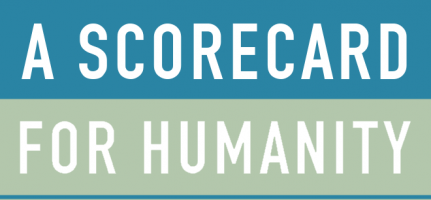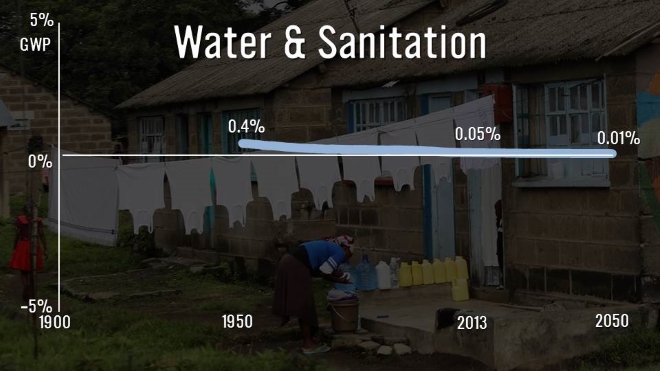A Scorecard for Humanity: Water and Sanitation, Jeuland et al
Assessment Paper
A version of the working paper is available for download here. The finalized paper has been published in How Much Have Global Problems Cost the World? A Scorecard from 1900 - 2050 by Cambridge University Press.
An Assessment Paper on water and sanitation was written by Marc Jeuland, David Fuente, Semra Ozdemir, Maura Allaire, and Dale Whittington and released as a chapter in How Much Have Global Problems Cost the World?
Water and sanitation are emotive headline topics that still cause 6–7% of deaths in developing countries -- yet progress has been and will be extraordinary: the death rate related to water and sanitation per 1,000 in developing countries was 1.5 in 1950, slashed to 0.4 today and again to 0.2 by mid-century. Although the rate is falling the numbers are still high: deaths by 2050 will likely still be around 1.7 million, mostly in sub-Saharan Africa, though down from 2.3 million today and 2.7 million of a much smaller population in 1950. It is great progress but still needs much more.
And progress does not just mean huge infrastructure projects: simple improvements such as chlorination or hand-washing reduce illness significantly, while piped water may make little difference if basic hygiene is not improved.
Measuring the impact in economic terms is not only about disease and death. This year, collecting water will take – mostly women – 74 billion hours, making up one-third of total losses. In all, the economic losses to developing world GDP from poor water and sanitation have already fallen from some 2% of GDP in 1950 (1/5 of GWP = 0.4% of GWP) to 0.13% in 2013 (about 35% of GWP = 0.05% of GWP). By mid-century losses will be down to just 0.02% (and maybe 60% of GWP = 0.01% of GWP).
Short summary
Diseases associated with poor water, sanitation and hygiene comprise on average 6-7% of the annual mortality in developing countries. A growing body of research suggests that a variety of different types of water, sanitation, and hygiene (WASH) interventions are effective and capable of delivering large health benefits to target populations. Many of these interventions – the provision of improved community water supplies, point-of-use water treatment, hygiene education, on-site sanitation – can be delivered at very low cost, but their adoption remains surprisingly low. Piped water and sewerage services, the gold standard for water and sanitation in the developed world, do not seem to be necessary to achieve many of the health benefits from improving existing water and sanitation conditions. Household demand for these network services, however, is much higher than for low cost interventions, perhaps because they bring other types of improvements that households value, such as time savings and greater convenience.
The paper presents a global analysis of the “economic losses” associated with inadequate water and sanitation from 1900 to 2050. These estimates provide an entry point for thinking about the challenges of ameliorating water and sanitation services in poor countries. Using a simple simulation model, it calculates the economic losses from the morbidity and mortality associated with inadequate water and sanitation services, and from the time spent collecting water from outside the home, in developing countries during the period 1950 to 2008. We then use projections of GDP and population growth to forecast economic losses from 2008 to 2050. We compare total economic losses with non-monetary measures of disease burden, such as deaths due to WASH-related diseases.


